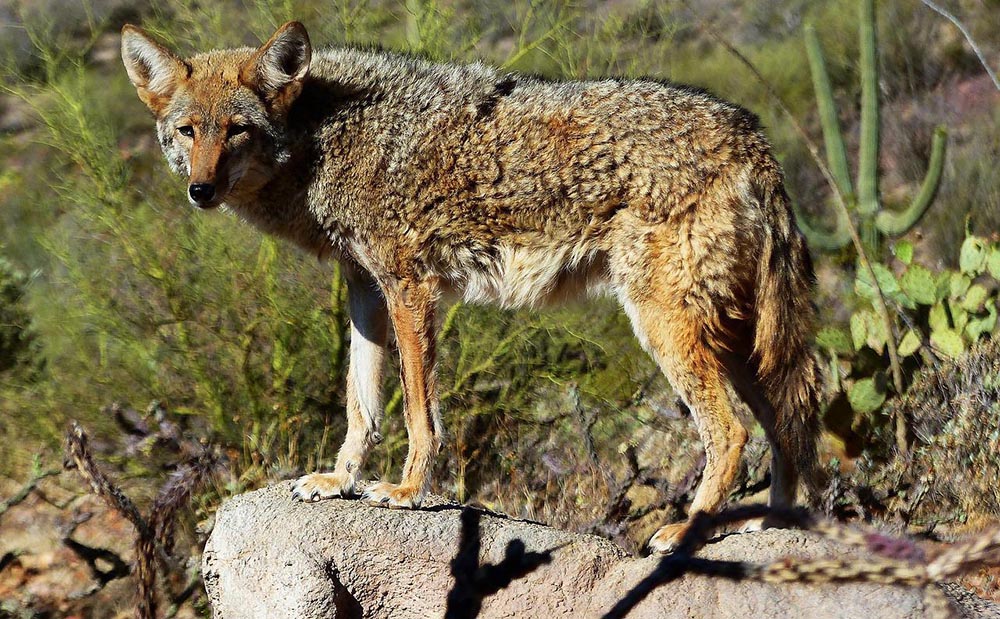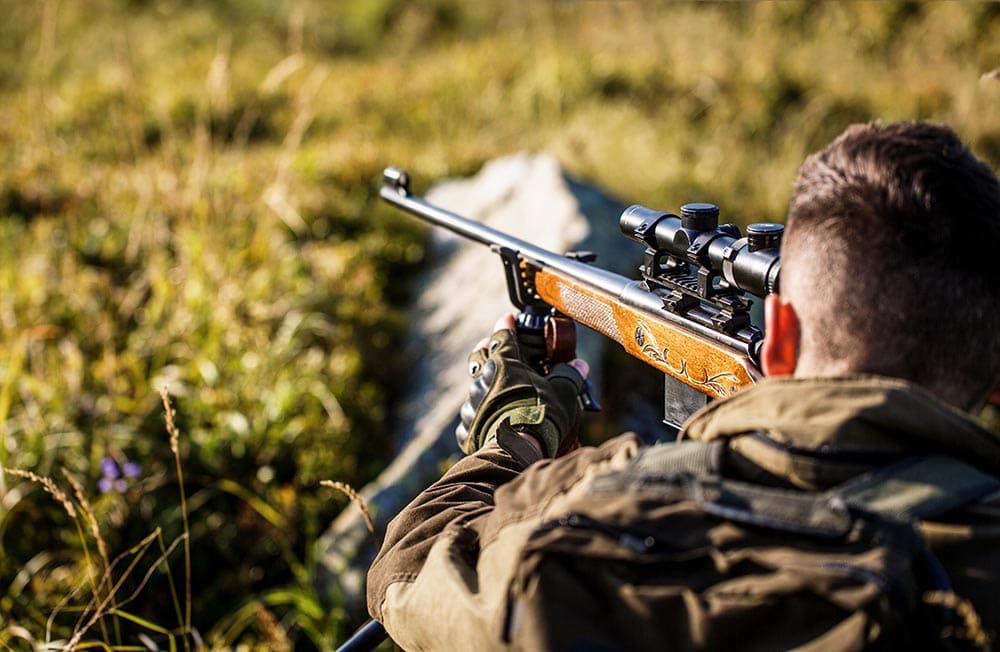How to Hunt Coyotes: 8 Basic Tips & Tricks
Last Updated on

If you’re looking to hunt coyotes, you’re in for a real challenge. Coyotes are well-known for their intelligence, and it’s this battle of wits that will decide whether you can catch one.
But how can you increase your chances of success? Here, we give you a few tips and tricks to get you ahead of the curve. That way, the next time that you head out for a coyote hunt, you can come back with a coyote!

How to Hunt Coyotes – 8 Basic Tips & Tricks
1. Pick the Right Time of Year
You can hunt coyotes whenever you want (as long as there are no local laws or restrictions against it), but there are certain times when it’s best to hunt them.
If you’re looking for the “easiest” coyote hunt, you want to do it in the fall. Autumn is when coyotes naturally start pairing up for the breeding season. So, they’re more active and moving around, which is exactly what you want when you’re hunting for them.
However, if you’re hunting coyotes for their pelts, you’ll want to hunt them in the winter. This is when coyotes have the thickest pelts, in order to get them through the cold weather.
2. Pick the Right Time of Day

If you want to get a coyote, you need to go hunting for them at the right time. You can either go in the early morning or early evening, but skip the middle of the day. Coyotes tend to sleep and laze around during the middle of the day when the weather is hottest.
They’re active in both the early hours of the morning and evening, and this is when you have the best chance to get them. You can hunt them at night because they’re mostly nocturnal, but keep in mind that they have excellent vision at night. So, unless you’re using thermal/night vision, you will be at a significant disadvantage when you’re out hunting them. If you do have such equipment, though, nighttime is an ideal time to hunt for coyotes.
They’re most active at night, and they are also the most vocal then. If you have the right equipment, hunting coyotes at night can be the easiest way to get one!
3. Pick the Right Location
If you don’t know where coyotes hang out, you’ll be at a major disadvantage when you try to hunt them. Get the lay of the land and pick out the perfect location before you head out with your rifle.
This means you can get set up right away when you’re actually ready to hunt, and that’ll save you from rustling around trying to find the perfect spot.
You want an elevated location where the coyote can’t see you but where you have a great view of at least 50 to 75 yards in front of you. Ensure that you don’t leave a silhouette shadow for the coyote to spot.
4. Hide Your Car

Give coyotes a bit of credit: They’re smart. If they’re coming to your call and spot your vehicle, they’re as good as gone. Find somewhere to hide your car, and ensure that it’s nowhere near where you’re hunting.
You don’t want a coyote to spot your vehicle, or your hunt might be over before you even start!
5. Stay Quiet From the Start
Sometimes, all it takes is a slammed truck door to ruin your hunt. If you’re out hunting coyotes, you need to stay quiet from the very beginning.
Turn off the music when you’re pulling up to your location, shut the doors quietly, and do your best not to crush everything in the underbrush when you’re getting to your location. A successful hunt hinges on you staying quiet and spotting the coyotes before they spot you.
6. Stay Patient
Too many people pick out the perfect spot, let out a call or two, and then move on before the coyotes can get there. Give it a bit of time and stay patient.
You want to wait at least 30 minutes before moving on to a new spot; this way, the coyotes have plenty of time to get to you once they hear the call.
Don’t just jump from spot to spot, or you might attract the coyotes to you, only to scare them off when moving positions.
7. Stay Downwind

You might think that you have a fine-tuned sense of smell, but it’s nothing compared to a coyote’s. The best way to keep a coyote from smelling you is to stay downwind of them.
This will carry your scent away so it won’t scare off the coyotes before you have a chance to see them.
8. Get the Call Right!
Getting a coyote to come to you all comes down to the call that you’re using. There are hand and electronic call options available, and there’s no wrong choice here. Use whatever you’re comfortable with to get the best results.
Most coyote hunters use a rabbit-distress call, but there are hundreds of different options out there. It depends on the area, the coyotes, and how heavily hunted the coyotes that you’re after are. Stick with the basics unless there’s a specific reason that it won’t work.

Final Thoughts
If you’re looking to have a successful coyote hunt, take the time to do it right. You’re not going to catch a coyote accidentally; it’s going to take patience and skill.
While it’s a challenge to get a coyote, that’s part of what makes the hunt so enjoyable.
See also:
Featured Image Credit: rauschenberger, Pixabay
About the Author Robert Sparks
Robert’s obsession with all things optical started early in life, when his optician father would bring home prototypes for Robert to play with. Nowadays, Robert is dedicated to helping others find the right optics for their needs. His hobbies include astronomy, astrophysics, and model building. Originally from Newark, NJ, he resides in Santa Fe, New Mexico, where the nighttime skies are filled with glittering stars.
Related Articles:
How to Collimate Binoculars: 9 Expert Tips
How to Clean a Rifle Scope: 8 Expert Tips
How to Choose Binoculars for Bird Watching: 10 Expert Tips
How to Clean a Refractor Telescope: Step-by-Step Guide
How to Clean a Telescope Eyepiece: Step-by-Step Guide
Monocular vs Telescope: Differences Explained (With Pictures)
What Is a Monocular Used For? 8 Common Functions
How to Clean a Telescope Mirror: 8 Expert Tips
